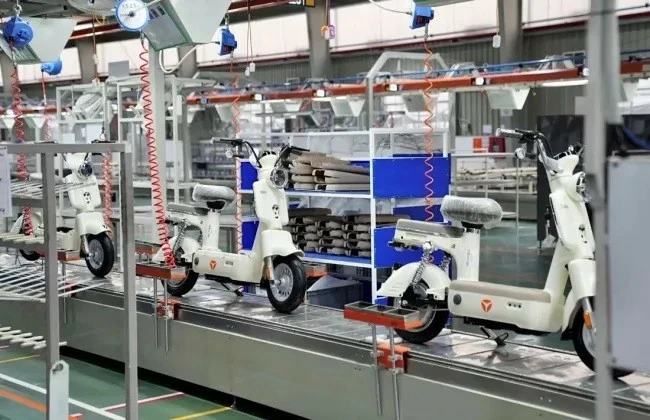
China’s growing investment footprint in Vietnam: Ministry of Planning and Investment
Latest
 |
| China’s growing investment footprint in Vietnam: Electric 2-wheel vehicle manufacturer Yadea increases investment expansion in Vietnam. (Photo: VTV) |
A prime example is the interest shown by Goldwind in China, a global leader in wind turbine manufacturing, in establishing a state-of-the-art wind turbine component manufacturing and assembly plant in the northern port city of Hai Phong. With over 47,000 turbines supplied and a total installed capacity exceeding 97 GW, Goldwind’s interest signals a significant boost for Vietnam's renewable energy sector.
The recent Hai Phong investment promotion conference in China’s Shenzhen city saw the awarding of seven new and expanded investment certificates to Chinese investors, totaling nearly 200 million USD. These investments are in a range of industries, including solar panel production, electronic components, and automotive parts manufacturing. Additionally, the Hai Phong Economic Zone Authority (HEZA) also signed four memoranda of understanding with major Chinese investors.
Minister of Planning and Investment Nguyen Chi Dung highlighted a positive shift in Chinese investment toward hi-tech and green energy sectors, such as technology, electronics, manufacturing, infrastructure, renewable energy, and electric vehicles. This marks a departure from traditional investments in labor-intensive industries like furniture, steel, and apparel
Notable projects from Chinese giants such as Goertek, BYD, Radian, Brotex, Wingtech, Deli, and Trina Solar have already established their presence in Vietnam, with investments ranging from millions to billions of USD.
Beyond investment, China remains Vietnam's largest market for agricultural products. According to the General Department of Vietnam Customs, two-way trade exceeded 100 billion USD for the first time in 2018 and soared to 171.2 billion USD in 2023, accounting for over 25 per cent of Vietnam's total export-import turnover.
As many as 11 types of Vietnamese fruit, including mango, dragon fruit, and durian, are among the top exports to China, said General Secretary of the Vietnam Fruit and Vegetable Association Dang Phuc Nguyen.
Prof. Nguyen Mai, Chairman of the Association of Foreign Invested Enterprises (VAFIE), attributed Vietnam's appeal to its favorable geographic location, relatively low labor costs, affordable land rentals, and tax incentives. The availability of locally produced raw materials, which can be exported with added value, also further enhances Vietnam's attractiveness to Chinese investors, he said.

























